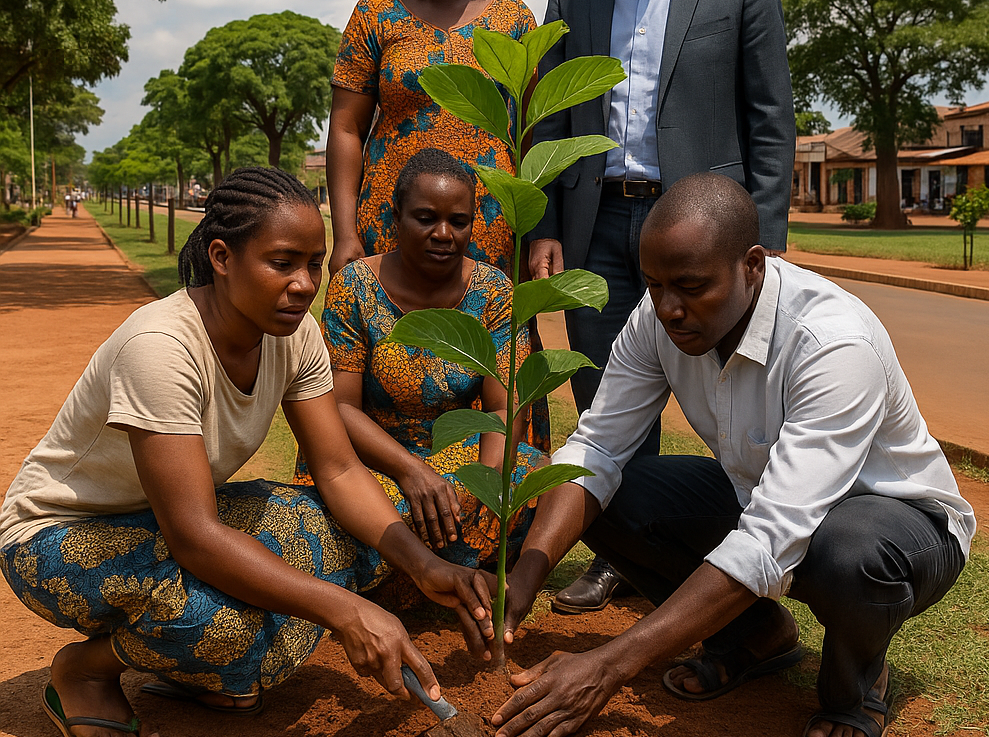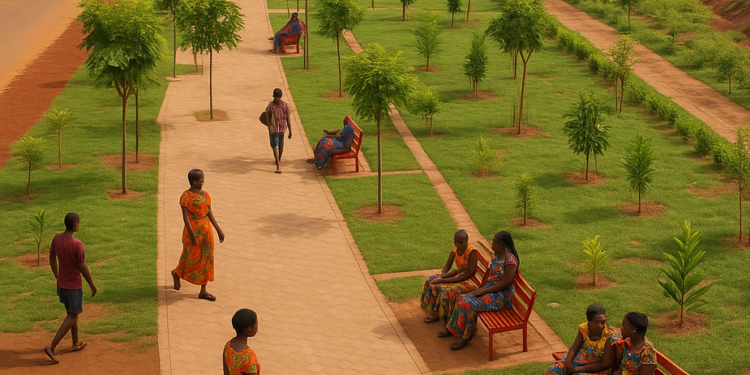In a region where the land suffers and the climate no longer gives warning, two Central African cities have decided to reinvent themselves. Bangui and Berbérati are not just withstanding the blows of climate change—they are planting hope. Tree by tree, park by park, these cities are transforming into greener, more resilient spaces designed for the people.
This effort is part of a new phase of the Inclusive and Resilient Cities Project (PROVIR), an initiative that combines urban infrastructure with nature-based solutions. The goal is clear: to reduce flooding and erosion by restoring lost urban ecosystems. Tree-lined avenues, restored green spaces, natural drainage systems, and regenerated forests will become new barriers against an increasingly extreme climate.
The Central African Republic ranks second among the countries most vulnerable to climate change. With heavy rains flooding entire neighborhoods and dry seasons leaving the land cracked, the population lives in constant alert. In this context, PROVIR represents more than just a project: it is a strategy for survival, dignity, and rebuilding.

More than 300,000 people will benefit directly, especially those living in highly vulnerable situations: women, youth, refugees, internally displaced persons, and returnees. For them, this transformation is not only aesthetic or ecological—it means a safer environment, better basic services, and new livelihood opportunities. Many of these opportunities will come directly from nature itself: sustainable fishing, gathering forest products, maintaining green areas, and community water management.
“We can no longer rely on concrete alone. Nature also has its answers. This project seeks to combine the best of both worlds,” explains a local urban planning official in Bangui. “People need to feel part of their environment. The city should protect them, but also give them life,” she adds.
PROVIR’s proposal did not emerge in isolation. Behind it lies a network of international collaboration. The project preparation has benefited from technical and financial support from the Global Environment Facility (GEF), the Global Facility for Disaster Reduction and Recovery (GFDRR), the City Climate Finance Gap Fund, and the NBS Invest platform. The World Bank has coordinated the overall process, supporting the initiative as part of its commitment to sustainable urban development in fragile contexts.
The project aligns with the World Bank Group’s 2021–2025 Climate Change Action Plan, which promotes a transition toward greener, more inclusive, and competitive cities. But in Bangui and Berbérati, this technical approach has become something more personal: a way to restore balance with the land, heal past wounds, and plant the seeds of the future in the very heart of Africa.




